
Mastering How to Write a Logistics Proposal: Best Tips & Templates
Need to know how to write a logistics proposal that stands out? This guide covers everything you need, from understanding your client's needs and structuring your proposal to highlighting your unique value proposition. Mastering these steps will help you create compelling and effective logistics proposals.
Key Takeaways
- A logistics proposal should clearly demonstrate how your services address client-specific needs, emphasizing value and effective solutions.
- Structuring the proposal with components like an executive summary, company overview, and service offerings builds trust and showcases professionalism.
- Incorporating clear language, visuals, and customized elements ensures the proposal is engaging and effectively communicates your logistics capabilities.
Navigating Tariff Uncertainty and Labor Challenges in Logistics
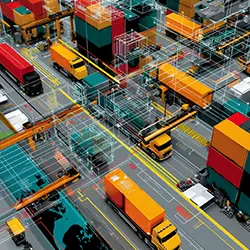
Today's logistics industry faces significant disruptions driven by uncertainty in tariff policies and ongoing labor challenges. Rapid changes in government tariff regulations have created instability, forcing businesses to frequently reevaluate and reroute their supply chains. This unpredictability impacts inventory planning, causing businesses to delay or put orders on hold, ultimately resulting in increased operational costs and reduced profitability.
Moreover, the lack of consistent, long-term trade policies amplifies the complexity of international logistics management. Companies must continuously adapt their logistics strategies to navigate shifting tariffs effectively, leading many businesses to seek alternative suppliers or consider relocating operations to more tariff-stable regions. This environment requires logistics providers to demonstrate exceptional adaptability and proactive planning in their proposals.
In addition to tariff uncertainty, labor shortages remain a critical issue affecting logistics operations globally. The scarcity of qualified personnel, especially in transportation and warehousing, has compounded supply chain disruptions. Proposals must now account for these workforce shortages by highlighting automated systems, streamlined operational processes, and effective workforce management strategies to maintain uninterrupted service delivery.
Addressing these contemporary challenges transparently in logistics proposals will assure potential clients that your business is equipped to manage uncertainty. Clearly outlining mitigation plans, including alternate routes, diversified sourcing, automation, and strategic workforce planning, can significantly enhance your proposal's credibility and appeal.
Planning for AI's Near-Term and Long-Term Impact on Logistics
Artificial intelligence (AI) is swiftly transforming logistics, influencing operations significantly in both the near and long term. In the immediate future, AI will enhance efficiency through predictive analytics, improved route optimization, real-time tracking, and automated inventory management. Companies adopting AI-driven logistics solutions can realize immediate benefits such as reduced operational costs, increased delivery accuracy, and improved customer satisfaction.
The long-term impacts of AI will be even more profound. Fully autonomous vehicles, advanced robotics in warehousing, and intelligent decision-making systems are expected to revolutionize the logistics landscape. These advancements promise substantial reductions in labor costs and human error, greater scalability, and continuous operation capabilities without traditional downtime.
Businesses must proactively strategize to accommodate these evolving technologies. Proposals should outline clear roadmaps for AI integration, including investments in technological infrastructure, workforce training for new skills, and a phased approach to automation. Demonstrating foresight in managing AI adoption, companies can position themselves as innovative leaders, effectively addressing both current needs and future challenges in logistics.
Understanding the Purpose of a Logistics Business Proposal
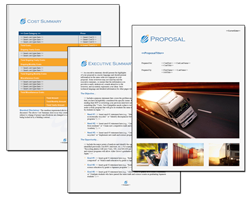
A logistics business proposal aims to demonstrate how your services can meet the specific needs and challenges of potential clients. By highlighting your solutions to their logistical issues, these proposals seek to persuade businesses that your operations are the best fit for their requirements.
Presenting logistics solutions effectively can win clients by showcasing tangible benefits and value.
Importance of a Cover Letter
The cover letter introduces your logistics proposal, outlining its aim and providing contact details. This is your chance to introduce yourself, explain the timing of the proposal, and share your contact information.
A well-written cover letter sets the tone for the proposal and can significantly influence its success by establishing initial communication with potential clients, as it is written to engage them effectively and to write effectively.
Needs Assessment
Conducting a thorough needs assessment is key to tailoring your logistics proposal to the client's specific requirements. This section should describe the client's needs, goals, or problems, such as moving goods efficiently or addressing a backlog of orders. Detailed insights into the client's challenges and objectives help craft a proposal that meets their logistical needs effectively.
Specifying how your services address these needs demonstrates a deep understanding of their situation, making your detailed solution proposal more compelling.
Structuring Your Logistics Proposal

A well-structured logistics proposal establishes trust and credibility with potential clients. It reflects the quality and professionalism of your work and often serves as the first impression of your company. A detailed proposal showcases your commitment to understanding the client's business and highlights your skills and professionalism.
This section guides you through structuring your logistics proposal to positively impact client perception.
Executive Summary
The executive summary is a crucial component that captures the reader's interest. It should be concise, ideally not exceeding two pages, and provide a compelling snapshot of the proposal's key bullet points.
Emphasize the unique value proposition to capture decision-makers interest, setting the stage for a successful proposal.
Company Overview
The company overview should highlight your history, expertise, relevant experience, achievements, team, technology, certifications, and awards. These elements help establish trust with potential clients and showcase your operational ethos at the company name, as well as the strengths of similar companies.
Emphasizing your culture and values, along with relevant industry certifications, can further convince clients that you are the secure right choice.
Service Offerings
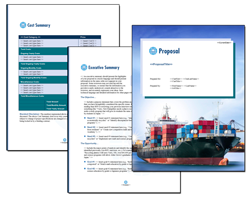
Detailing your service offerings demonstrates the effectiveness of your logistics services. Core services typically include transportation via road, air freight services, rail, and sea transport, as well as warehousing and inventory management. Additionally, offering services such as customs and purchasing can differentiate your proposal from competitors.
Case studies or testimonials can further illustrate the success of your services and build trust and credibility.
Pricing Models and Terms
Transparent pricing information and contract terms ensure clients understand the costs and commitments involved. Utilizing logistics services can significantly reduce operational costs due to enhanced supply chain efficiency. Flexible pricing models and packages can cater to diverse client needs and enhance the appeal of your services.
Writing a Detailed Implementation Plan
A detailed implementation plan is critical for any logistics proposal. It should provide a clear roadmap for executing proposed services, including timelines, resources, key milestones, project management methodologies, communication strategies, and potential challenges.
An effective implementation plan assures clients of your capability and provides a clear framework for careful planning and measuring success, reflecting the client's needs.
Process Summary

A process summary highlights the essential phases and timelines involved in delivering logistics services. Key milestones often include planning, execution, monitoring, and completion of the logistics process. A detailed project plan should specify the necessary resources, including personnel and technology, for successful implementation.
Project Plan
The project plan should highlight task dependencies to ensure smooth execution. Streamlined logistics solutions can enhance productivity by reducing lead times and improving order fulfillment rates. Clearly defining roles and responsibilities helps streamline communication and enhance accountability.
Measuring Success
Measuring the success of logistics solutions gauges their effectiveness. Key performance indicators (KPIs) should be tailored to the project's specific objectives. Regular performance reviews against established metrics are crucial for assessing the impact of logistics solutions.
Emphasizing Benefits and Value Proposition
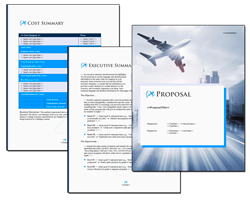
A logistics proposal must clearly communicate your value proposition and strengths to convince potential clients of your services' value. Unique benefits include cost savings, improved efficiency, access to advanced technology, and a strong service track record.
Quantifiable metrics such as reduced delivery times or increased inventory turnover demonstrate your services' potential impact on clients.
Cost Savings
Logistics services can generate significant cost reductions by optimizing supply chain operations and reducing costs and overhead expenses. Improved route planning can significantly reduce shipping expenses, and reverse logistics can also play a role in enhancing efficiency. Additionally, companies that provide logistics services can further streamline these processes.
Focusing solely on the lowest price may overlook critical service aspects and lead to increased costs later due to unforeseen market changes.
Efficiency Gains
Efficient logistics strategies can lead to savings through bulk shipping discounts and reduced inventory holding costs. Operational efficiency is critical as it directly impacts cost management and service delivery.
Integrating efficient logistics strategies and a strategic approach enhances operational performance, leading to increased profitability and satisfied customers.
Technology Integration
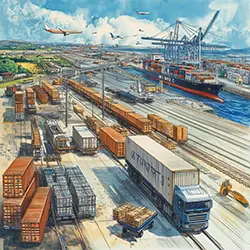
Advanced technology enhances logistics operations. Integrating transportation management systems (TMS) streamlines shipping processes, significantly improving service delivery. Automated systems can result in better order accuracy and a more efficient workflow.
Leveraging advanced technology, logistics services can offer a unique combination of speed, accuracy, and reliability, making them more appealing to potential clients.
Tips for Writing a Successful Logistics Proposal
Creating a successful logistics proposal involves key practices:
- Adhering to client guidelines
- Ensuring clear headings and subheadings to make your proposal easy to read
- Offering various pricing models and outline pricing to attract a wider range of clients and allow for tailored solutions to fit different budgets
Proofreading and editing your proposal ensures there are no errors or inconsistencies, reflecting professionalism and enhancing the proposal's impact. Tools like Proposal Kit Professional can streamline the process, offering extensive content and customizable templates to match your branding.
Customize for Each Client
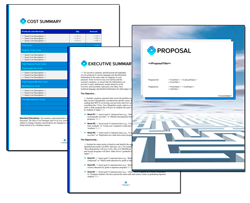
Customizing each logistics proposal to meet the potential client's specific needs can significantly improve its acceptance. Addressing unique challenges and goals helps build rapport and trust. Tailoring your proposal demonstrates an understanding of the client's specific situation, setting it apart from generic ones.
Use Clear and Concise Language
Clear and concise language is essential for effective communication in logistics proposals. Straightforward language prevents misunderstandings. Avoiding jargon and overly complex terms makes the proposal accessible to all readers, building trust and ensuring a clear understanding of your services.
Incorporate Visuals and Data
Incorporating visuals such as charts and graphs makes complex information more digestible and engaging for clients. These elements clarify complex concepts and maintain the reader's interest in the document.
Using visuals and data conveys important information in a more compelling and accessible manner.
Common Mistakes to Avoid
Avoiding common mistakes greatly enhances the effectiveness of your logistics proposal. A lack of customization can make proposals feel generic and less appealing. Unclear communication can lead to misunderstandings about services and expectations, undermining confidence in your proposal and addressing potential pain points.
Poor presentation can detract from the professionalism of the proposal and fail to capture the client's attention.
Here are some related samples included in every downloadable Proposal Pack
The AI Writer generates a first draft of these templates - customized to your company, client, and project - in just minutes, giving you a head start on editing. Get any Proposal Pack or Proposal Kit Professional, and all of these samples, and the AI Writer are included.
- Software Automation Sample Proposal
- Process Improvement Sample Proposal
- Business Continuity Services Sample Proposal
- Transportation Shipping Services Sample Proposal
- Manufacturing Process Improvement Sample Proposal
- Import Export Services Sample Proposal
- Manufacturing and Distribution Sample Proposal
- Request for Proposal (RFP) Sample
- Transportation Request for Proposal (RFP) Sample
Here are some related downloadable templates
The AI Writer generates a first draft of these templates - customized to your company, client, and project - in just minutes, giving you a head start on editing. Get any Proposal Pack or Proposal Kit Professional, and all of these templates and the AI Writer are included.
Leveraging Proposal Kit Professional
Proposal Kit Professional offers extensive content and advanced software features to enhance your logistics proposals. Using this tool can reduce preparation time significantly and increase close rates.
The application allows for customizing a custom template specifically suited for logistics proposals, making it easier to create professional, tailored documents that meet your clients' needs.
The Proposal Kit software also includes a line item quoting system for financial and schedule pages as well as an AI Writer that can create tailored first drafts ready to edit in minutes.
What to Do After Writing Your Proposal
After writing your logistics proposal, effective editing and proofreading refine its clarity and persuasiveness. Following up promptly with the potential client after submission reinforces your commitment and allows you to address any immediate questions. Sending a confirmation email ensures the client receives the proposal.
Organizing a 'lessons learned' session post-submission can help gain insights into improvements for future proposals and outline the next steps.
Summary
Writing a compelling logistics proposal involves understanding the client's needs, structuring the proposal effectively, and highlighting the unique benefits of your services. By focusing on clear communication, customization, and incorporating visuals, you can make your proposal stand out. Utilizing tools like Proposal Kit Professional can streamline the process and enhance the quality of your proposals. A well-written proposal not only showcases your services but also builds trust and credibility with potential clients. Apply these tips and templates to master the art of writing logistics proposals and win more contracts.
 Proposal Kit Professional provides the most content, including legal contracts and a free design theme pack. Plus, advanced software features include custom branding and customizable quoting databases.
Proposal Kit Professional provides the most content, including legal contracts and a free design theme pack. Plus, advanced software features include custom branding and customizable quoting databases. Proposal Pack for Any Business covers this type of proposal and includes samples. There are also some commonly used specialty design themes available:
Proposal Pack for Any Business covers this type of proposal and includes samples. There are also some commonly used specialty design themes available:Photo Design Proposal Packs
Line Art Design Proposal Packs
 Proposal Pack Aerospace #1
Proposal Pack Aerospace #1 Proposal Pack Aerospace #2
Proposal Pack Aerospace #2 Proposal Pack Contemporary #1
Proposal Pack Contemporary #1 Proposal Pack Global #1
Proposal Pack Global #1 Proposal Pack Global #2
Proposal Pack Global #2 Proposal Pack Global #3
Proposal Pack Global #3 Proposal Pack Industrial #1
Proposal Pack Industrial #1 Proposal Pack Transportation #1
Proposal Pack Transportation #1 Proposal Pack Transportation #2
Proposal Pack Transportation #2 Proposal Pack Transportation #3
Proposal Pack Transportation #3 Proposal Pack Transportation #4
Proposal Pack Transportation #4
Frequently Asked Questions
What is the purpose of a logistics business proposal?
The purpose of a logistics business proposal is to demonstrate how your operations can meet the client's needs and to persuade potential customers or partners of your capability to deliver solutions effectively. It serves as a crucial tool in securing new business opportunities and fostering partnerships.
What is the first section of a typical business proposal?
The first section of a typical business proposal is the Cover Letter, which introduces the sender, explains the rationale for the proposal and includes contact information. This sets a professional tone and establishes the context for the proposal.
What should be included in the needs assessment section of a logistics proposal?
The needs assessment section must clearly articulate the potential client's requirements, objectives, and challenges, focusing on aspects such as the efficiency of goods movement and any existing order backlogs. Providing this targeted insight ensures that the proposal addresses specific logistical concerns.
What should be included in the section explaining how to satisfy client needs?
To effectively satisfy client needs, the section must encompass a Process Summary, Project Plan, Cost Summary, and the Benefits of your proposed plan. These elements will provide clarity and demonstrate the value of your approach.
What does Proposal Kit Professional offer for proposal writing?
Proposal Kit Professional offers comprehensive resources for proposal writing, including legal contracts, design theme packs, and advanced features such as custom branding, an AI Writer, and customizable quoting databases. This toolkit ensures a professional and tailored approach to creating proposals.



 Cart
Cart
 Are you just looking for a template, sample, or software for your logistics or supply chain proposal? Click these links to skip down the page and get right to it.
Are you just looking for a template, sample, or software for your logistics or supply chain proposal? Click these links to skip down the page and get right to it.










 Facebook
Facebook YouTube
YouTube Bluesky
Bluesky Search Site
Search Site